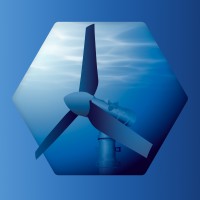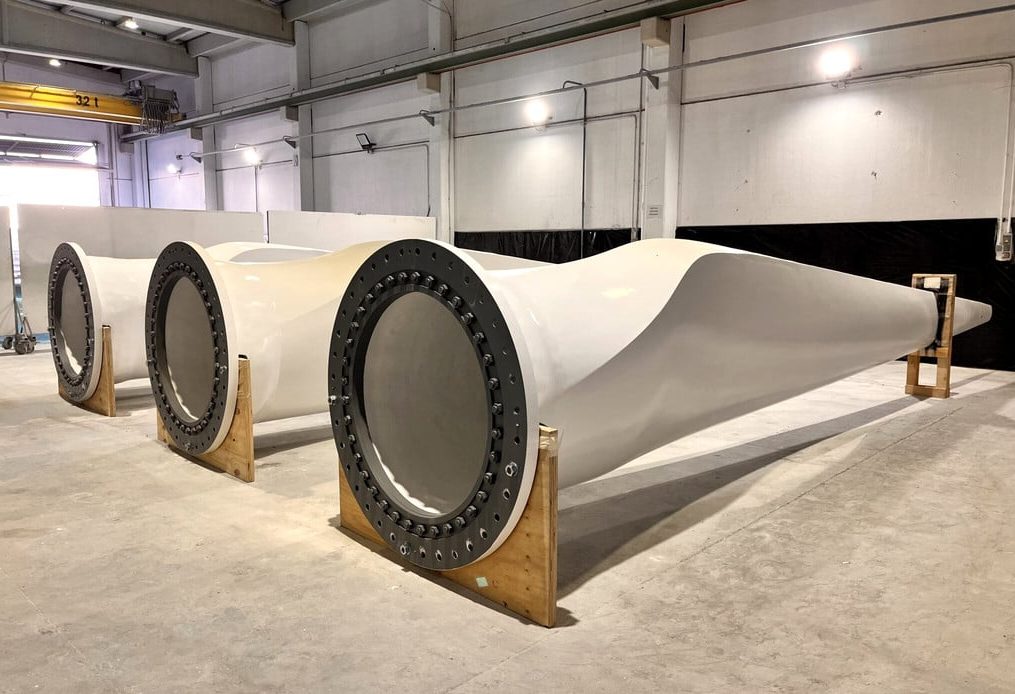Brand new NEMMO tidal turbine blades ready for a spin at sea
The collaborative EU-backed NEMMO project has reached its last and most significant milestone – producing novel-design tidal turbine blades, three of which are being shipped to be fitted on Magallanes Renovables’ ATIR tidal energy platform in Scotland.

INPRE Composites, one of the 12 partners in the NEMMO project, completed the manufacturing of four novel-design blades in late September 2023.
Three of these brand-new blades are now being shipped to the site of Magallanes Renovables’ ATIR tidal energy platform in Scotland for installation, while the fourth one was produced for structural testing.
Short for ‘Next Evolution in Materials and Models for Ocean Energy’, the NEMMO project was launched to boost the competitiveness of tidal energy by optimizing tidal turbine blade design and performance.
The project set an aim to create a larger, lighter and more durable composite blade for floating tidal turbines, enabling devices to reach capacities of over 2MW.
The novel tidal turbine blades and the manufacturing process
Manufacturing of the mould (Courtessy of NEMMO project)
Blade shell, webs and rib in the assembly process (Courtesy of NEMMO project)
The blades in the process of being closed (Courtesy of NEMMO project)
Assembly of the blades prior to applying the paint and anti-fouling layer (Courtesy of NEMMO project)
Painting the blades before laying the anti-fouling cover (Courtesy of NEMMO project)
Finished blades with anti-fouling cover (Courtesy of NEMMO project)
Four years since its launch, the finished blades look very impressive. The manufacturing process involved in producing these large-scale optimized prototypes was very challenging, according to project partners, requiring a lot of manual labor to ensure that the fabrication was carried out in accordance with the novel design.
To make these novel-design composite blades, new shell plugs and molds were first produced.
After that, different fiber-reinforced composite materials were laid up on the molds, followed by a resin infusion process. Once the layup of sub-components had been completed, the blade webs and rib, manufactured separately, were installed. Then, the main components were assembled and the second shell bonded.
Once all components had been bonded, the next step consisted of drilling the T-bolt holes and installing the interface crown, resulting in the fully assembled tidal turbine blade. Finally, the surface of the blades was prepared and painted. It was a complex process too, as different primers and a final anti-fouling layer had to be laid.
The new blades will soon be installed in the current tidal site of Magallanes Renovables’ ATIR platform in Scotland, hopefully within the next few months.
The final test of these blades will be performed at the tidal site following the final setup of the device and its control system. Magallanes Renewables will monitor and evaluate the blades’ performance and any eventual behavioral changes due to ageing, fouling, cavitation, and other factors, according to the NEMMO project partners.
The companies and institutions that worked together as part of the project included Blaest, CANOE, Dublin City University, Funditec, INPRE, ITAINNOVA, Magallanes Renovables , SPNano, SSPA, Ocean Energy Europe, Technion, and Tecnalia.
Subscribe and follow
Offshore Energy – Marine Energy LinkedIn

